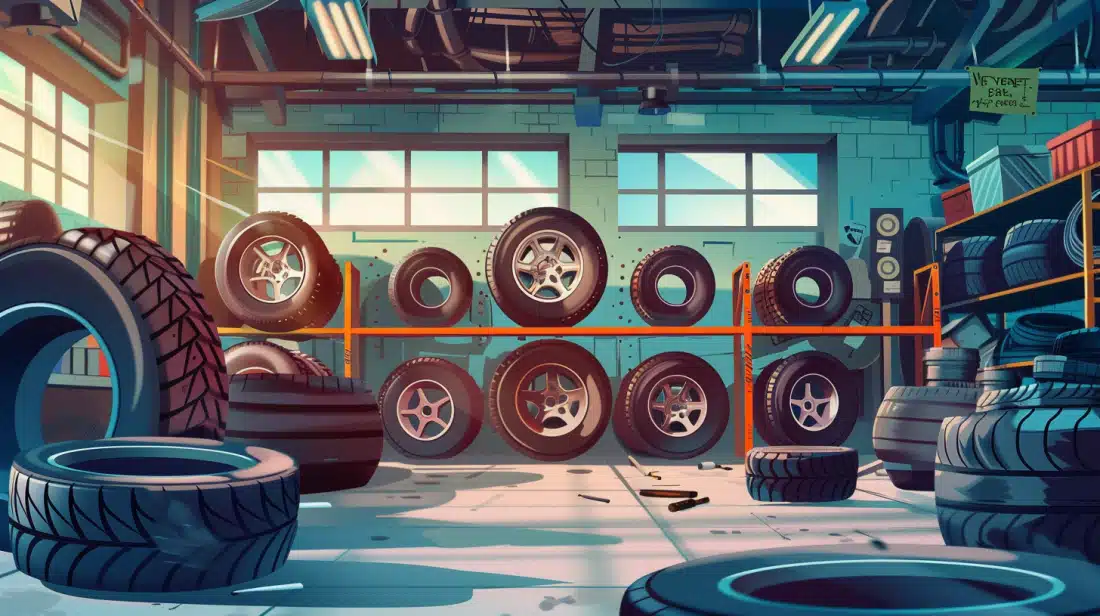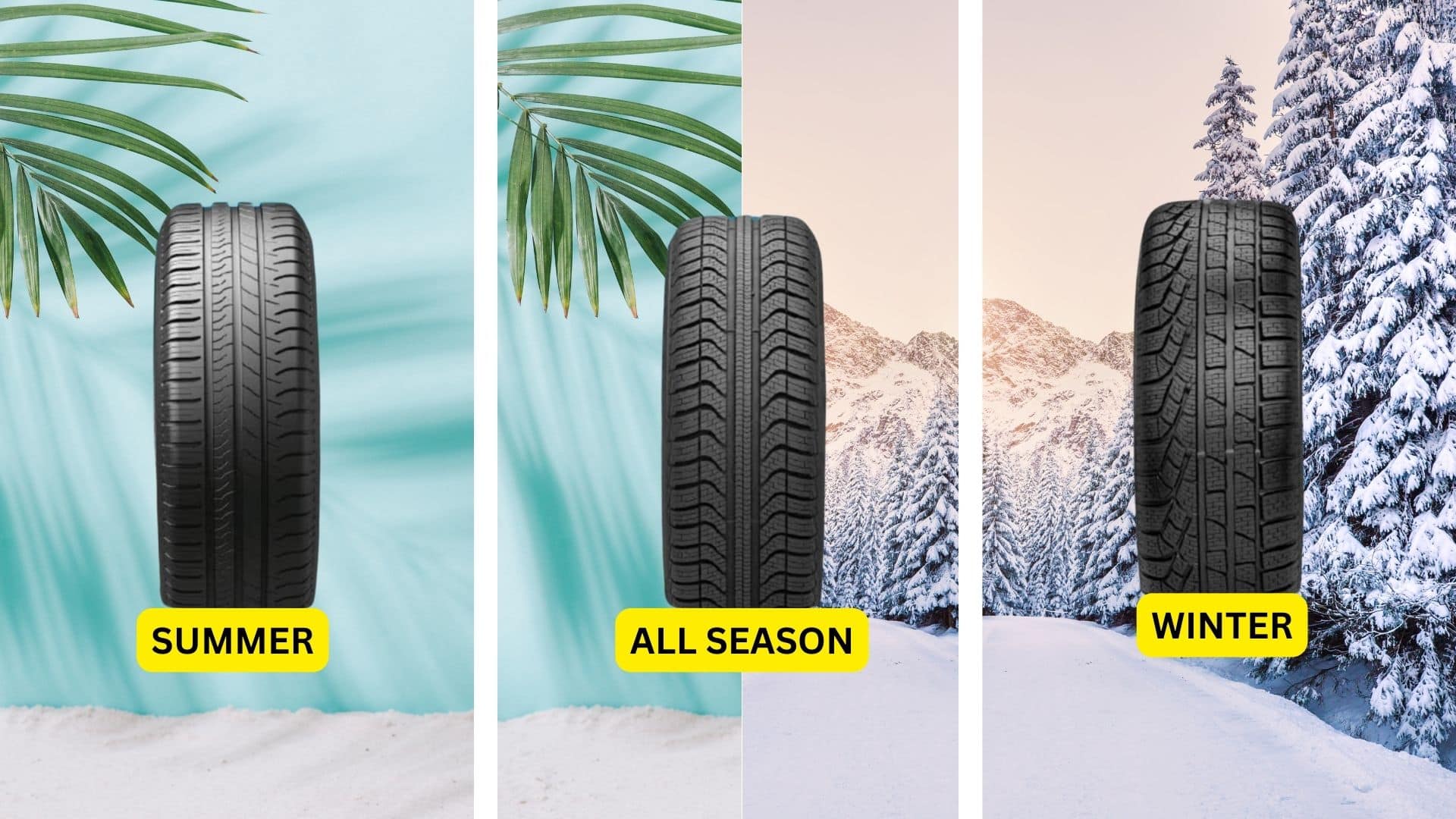Confused about choosing the right wheels and tires for your ride? You’re not alone.
With countless options and technical jargon, it’s easy to feel overwhelmed and make the wrong choice.
But don’t worry—we’ve got you covered! In this guide, we’ll discuss the key factors to consider when selecting wheels and tires, making the process simple and painless.
We’ll cover everything from understanding tire sizes and types to choosing the perfect wheel material and finish.
Say goodbye to confusion and hello to the ideal set of wheels and tires that will take your vehicle’s performance and style to the next level.
Let’s get started!
Types of Vehicle Wheels

Picking the right wheels is essential for your vehicle’s performance, safety, and looks.
Your choice depends on the wheel material, how it’s made, what you use your vehicle for, and what fits your car or truck.
Cast Wheels
Cast wheels are made by pouring hot aluminum into molds.
They’re the most common type because they’re affordable and easy to find.
Forged Wheels
Forged wheels are made by heating solid aluminum and shaping it under high pressure. This makes them very strong.
Forged wheels are stronger and lighter than cast wheels.
They help your car perform better because they don’t flex as much and cool down faster.
Steel Wheels
Steel wheels are tougher than alloy, but they’re heavier.
This can affect your fuel usage and the speed at which your car picks up.
Alloy Wheels
Alloy wheels are lighter than steel.
This makes your car handle better and uses less gas.
Factors for Wheel Selection
1. Size and Fitment
Picking the right wheel size and fitment is essential for your vehicle’s safety and performance.
If the wheels don’t fit right, it can affect your car’s handling, cause your tires to wear down faster, and mess up your alignment.
To find the right size and fitment for your specific car model, check your owner’s manual or look online for guides.
2. Material and Construction
Wheels can be made from aluminum, steel, alloy, or carbon fiber, each affecting their performance.
Different materials have their strengths and weaknesses. Some are lighter, some are stronger, and some cost more than others.
How the wheel is made (cast, forged, or flow-formed) also changes its strength and weight. Choose the wheel material based on how you use your vehicle.
If you drive every day, race, or go off-road, you might need different types of wheels. Think about where you live, too.
If there’s a lot of salt on the roads or the weather is tough, you might need wheels that can withstand those conditions.
3. Design and Aesthetics
The wheel design isn’t just about looks. It can also change how air moves around the tires.
Some wheel designs help air flow better around the tires, making your car more fuel-efficient.
Of course, how your wheels look also changes the style of your whole car.
3. Cost Considerations
When budgeting for wheels, consider both the upfront price and the value you get in the long run.
Wheel prices depend on the material, brand, and other factors. Different price points are available.
Spending more on high-quality wheels can be a good investment. They last longer, so you won’t have to replace them as often.
4. Practical Tips
- Different wheel designs make various types of vehicles (such as sports cars, luxury rides, or utility trucks) look better.
- Consider how the wheel’s color and finish (matte, glossy, or brushed) can make your car look even better.
- Look for the best deals on wheels. Check for sales at certain times of the year, consider used wheels, or see if you can get a package deal.
- Remember, lighter wheels can help you save money on gas over time, so factor that into your budget, too.
Understanding Tire Varieties

Picking the right tires is crucial for your vehicle’s performance, safety, and efficiency. The type of tire you choose should match how you use your car and the weather conditions you usually drive in.
Summer Tires
These tires are made to perform best in warm weather.
They work well on dry and wet roads during the hotter months.
They give you better road grip and handling when it’s hot outside.
Winter Tires
Winter tires have deeper treads and special patterns to handle cold weather.
It would be best to have these for driving on icy, snowy, and cold roads.
They help you get better traction on ice and snow and make shopping easier.
All-Season Tires
These tires can handle a mix of driving conditions.
They’re good for places with mild weather all year.
You get decent performance in different conditions, so you don’t have to change tires as often.
Performance Tires
They’re built for speed and quick responses on the road.
They cost more and don’t last as long, but they give you better grip and handling.
Economy Tires
These tires are made to last longer and help you save on gas.
You won’t get the same level of grip and precision as performance tires, but they’re cheaper and last longer.
Factors for Tire Selection
Choosing the right tires is essential for your vehicle’s performance, safety, and meeting legal requirements.
The right tires can improve driving and help your vehicle work more efficiently.
1. Tire Size
Tire size changes how your vehicle handles, including steering, balance, and gas mileage.
Changing to bigger or smaller tires than the maker suggests can affect how your car drives.
2. Tire Width
Wider tires can help your car grip the road better and improve handling, but they might use more gas.
It would help to balance tire width, vehicle type, and your car’s use (e.g., speed or saving money on gas).
3. Tread Patterns and Depth
- Function of Tread Patterns: Different types of tread patterns (symmetrical, asymmetrical, and directional) are made for other purposes. The tread design affects how well the tires perform in different weather conditions, such as wet, dry, or snowy conditions.
- Depth of Tread: Tread depth is important for safety, especially for stopping your car from sliding on wet roads. You should know how to measure tread depth and when to get new tires.
4. Load Capacity
Load capacity is how much weight a tire can safely carry, including your vehicle and the stuff you put in it.
You can find the load index on the side of the tire to know what it can handle.
5. Speed Rating
Speed ratings tell you the highest speed a tire is made to handle.
If you get tires with a speed rating, that’s too low for your vehicle, or how you drive, it could cause problems.
6. Practical Tips
Check your tires often for wear and ensure they have the right air to stay safe and work well.
Make sure your tires meet the standards and laws for where you live.
Conclusion
Selecting the right wheels and tires for your vehicle is a critical decision that impacts performance, safety, and style.
By considering factors like size, material, design, and cost, you can make an informed choice that enhances your driving experience.
Remember, the right wheels and tires improve your vehicle’s looks and contribute to better handling, fuel efficiency, and overall safety.
Take the time to research your options, consult with professionals, and make a decision that aligns with your specific needs and preferences.
Don’t forget to regularly maintain your wheels and tires to ensure optimal performance and longevity.
With the right wheels and tires, you’ll be ready to tackle any road confidently and with style. Happy driving!


